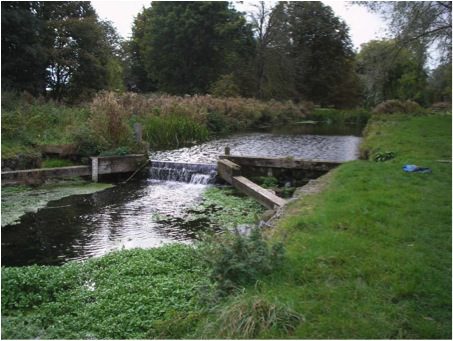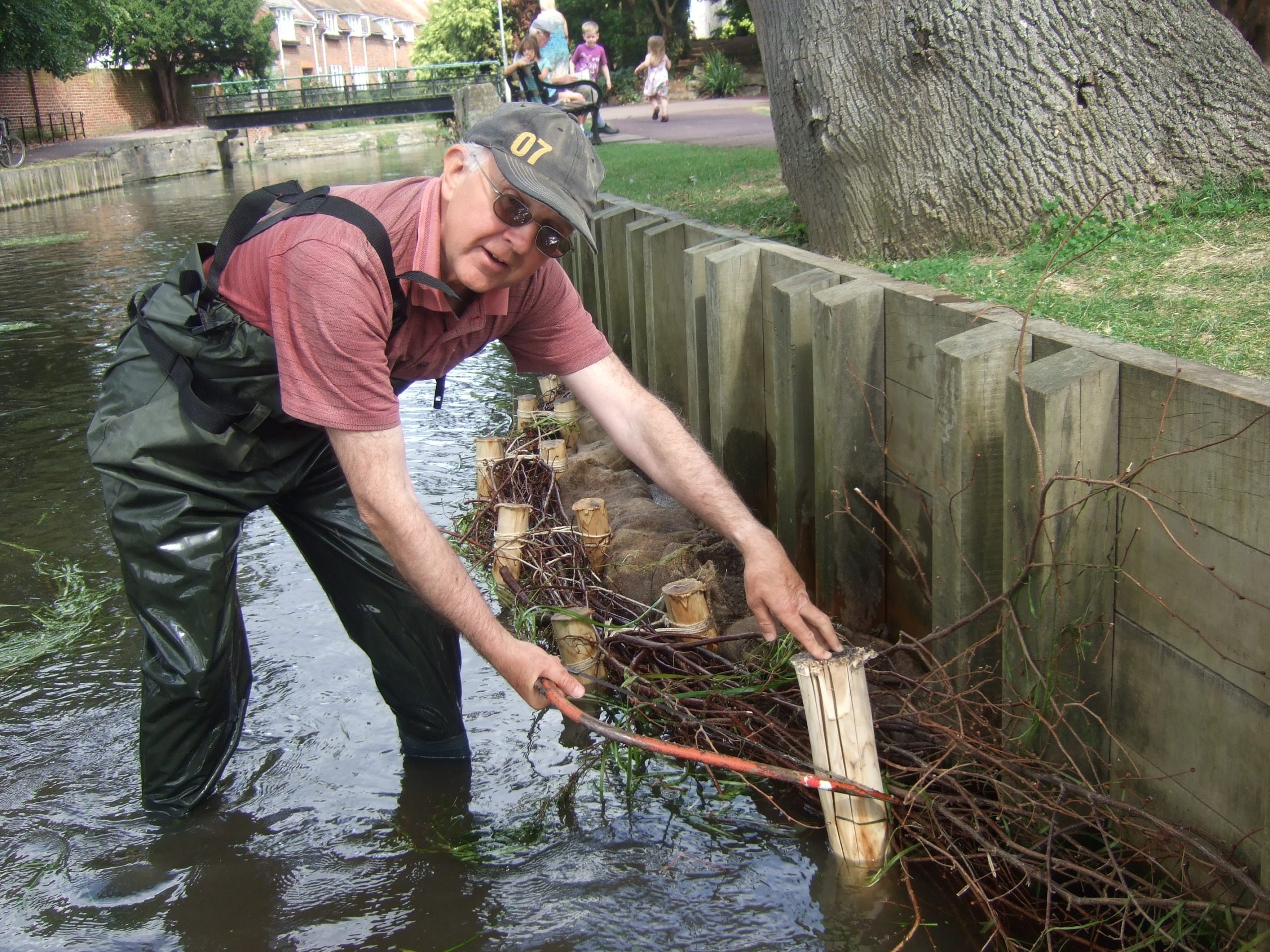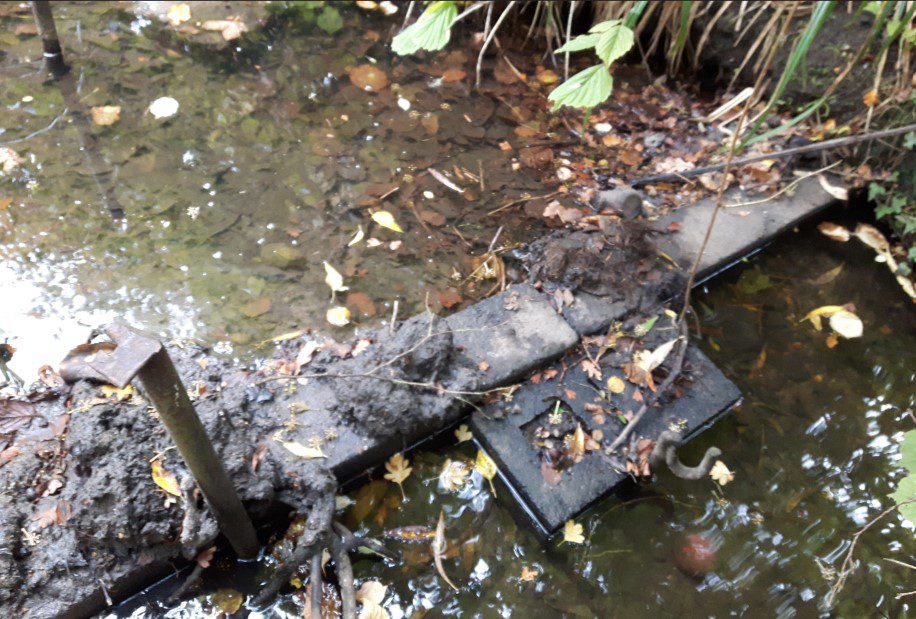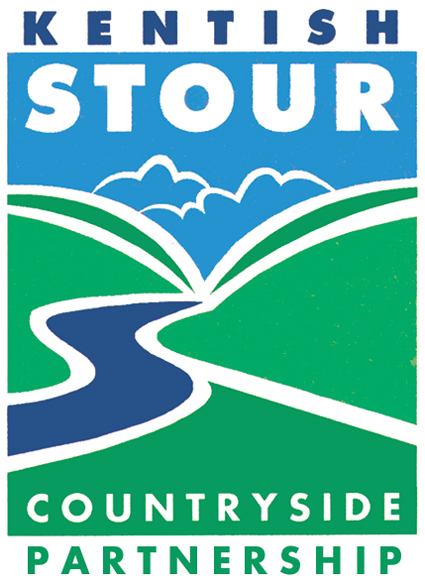Conserving chalk streams
KSCP’s WORK TO CONSERVE RARE RIVERS
Because chalk streams are globally rare habitats, they are a major focus of work for KSCP. Together with partner organisations, we are working in many ways to protect and restore them, monitor their ecology, and get communities involved in looking after these rare rivers. Here are just some of the ways in which we are helping chalk streams.
RIVER RESTORATION PROJECTS
River restoration is basically the process of returning a modified river back to something closer to its natural state. We have delivered river restoration on many rivers in our catchment, including chalk streams. This involves physical works on the river, including:
Channel reprofiling – moving material in the river bed to change its shape and make it more natural.

Reshaping the Little Stour
Removing bad structures – removing or modifying weirs and other structures so that they don’t obstruct the movement of fish and disrupt natural flow.

Weir before modification

After
Adding good structures – putting structures made from natural materials into the river can make the flow of water more varied and kick-start natural processes.

A ‘berm’ made from natural stone and gravel
Woody debris – fixing natural woody material in place in the water, to provide habitat and shelter for wildlife and make flow more varied.

Log fixed at side of river
Bank works – making hard surface banks more natural; reinforcing eroding banks with natural materials; narrowing overly wide channels; creating bays; excluding livestock that damages banks with fencing.

Natural materials being used to make river bank more natural
See examples of our river restoration work on chalk streams:
Little Stour at Seaton near Littlebourne
Great Stour at Godmersham and Milton
EAST KENT CATCHMENT IMPROVEMENT PARTNERSHIP (EKCIP)
KSCP are at the forefront of this partnership of organisations working together to improve rivers and the water environment generally. We don’t focus only on chalk streams, but they are a high priority in the partnership’s strategy, and many of the actions we take will benefit all rivers, including chalk streams.
The partnership is made up of government bodies, local authorities, and water companies and is chaired by KSCP. The aim of the EKCIP is to improve the local water environment so that there are multiple benefits for society. These include:
- Increased wildlife habitat
- Safeguarding of water resources (surface and ground water)
- Reduced flood risk
- More sustainable farming and water-based economic activity such as tourism
- Improved recreation opportunities (access, fishing, boating)
- Cleaner bathing beaches and shellfish areas
- Better resilience to climate change
East Kent Catchment Improvement Plan Summary Ongoing and Future Projects Feb-2024.docx
OUR STOUR
Our Stour is a community project all about enjoying and improving all the rivers and streams of the Stour Valley. The project is bringing real benefits for local people, river environments, and wildlife in the Stour Catchment.
Our Stour volunteers are getting involved in hands-on improvements to river habitats, monitoring riverside land and citizen science surveys. There are opportunities for training towards new skills, and educational activities for schools and community groups.
LITTLE STOUR AND WINGHAM RIVER PROJECT
This project is focused on these two chalk streams, which are closely linked because the Wingham River is a tributary of the Little Stour. It encompasses a broad range of activities, many of which involve local communities. We have been getting schools and community groups involved in ‘citizen science’ activities, monitoring water quality in these rivers, looking at the effects of past river restoration projects in the Seaton area. This includes regular riverfly surveys carried out by volunteers. We have also been delivering walkover surveys of the rivers and producing reports. We hope this work will pave the way for more river restoration projects to improve wildlife habitat and bring other benefits to these special waterways.

Bridge and Patrixbourne school children learnt
about looking after our rivers

Wingham Wheat Club learning Riverfly monitoring

A mill weir on the Little Stour
The project is being funded by the Environment Agency, and we are collaborating with South East Rivers Trust.
Wildlife posters created as part of the project – see links below
https://kentishstour.org.uk/wp-content/uploads/2024/04/Chalk-river-wildlife-1-poster.pdf
https://kentishstour.org.uk/wp-content/uploads/2024/04/Chalk-river-wildlife-poster-2.pdf
We are currently recruiting volunteers to take part. To get involved, email kentishstour@kent.gov.uk
Whitehall Dyke
This stream makes a journey from the Blean woods to the Great Stour west of Canterbury. On the way, it flows through many landholdings, including orchards, farmland and gardens. In some areas it suffers from a range of problems, including the loss of bankside vegetation, pollution from artificial fertilisers, man-made dams and weirs, invasive plants and diversion to feed ponds. We are working with landholders along the stream to make improvements, offering help and advice and encouraging them to leave field margins alongside the stream, remove structures and control invasive plants.

Small dam in the Whitehall Dyke
DISCOVER MORE ABOUT CHALK STREAMS
Chalk streams in the Stour Catchment
